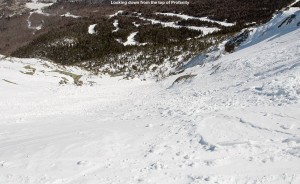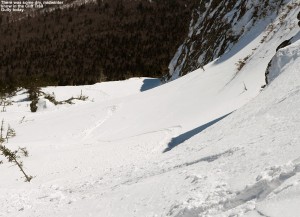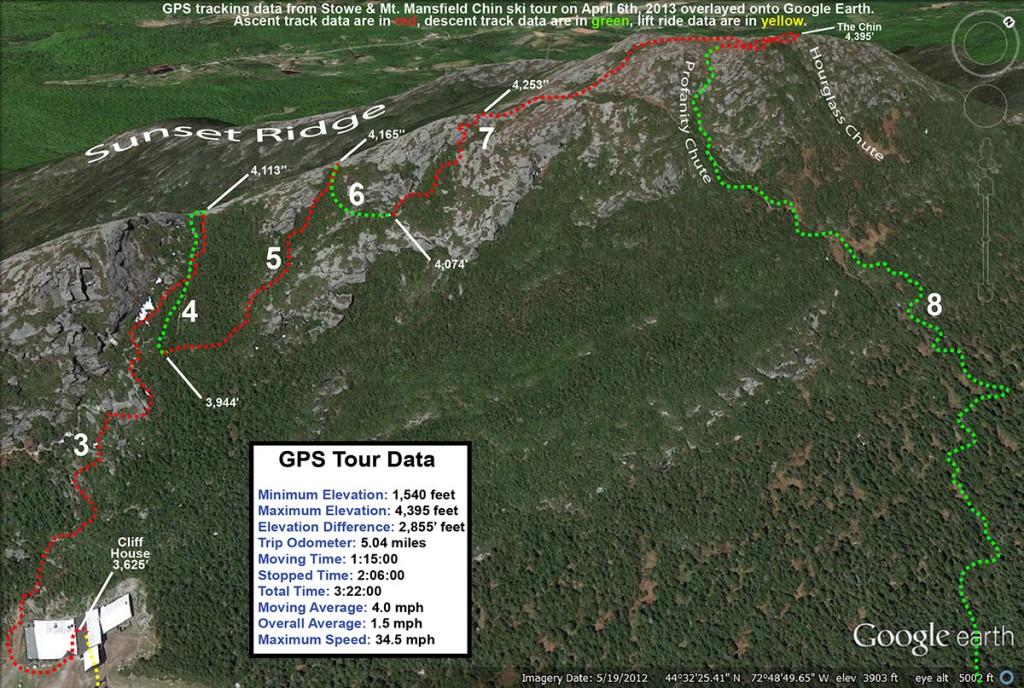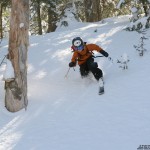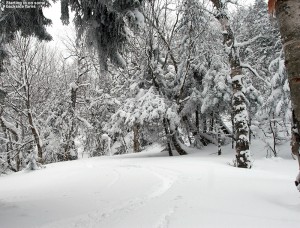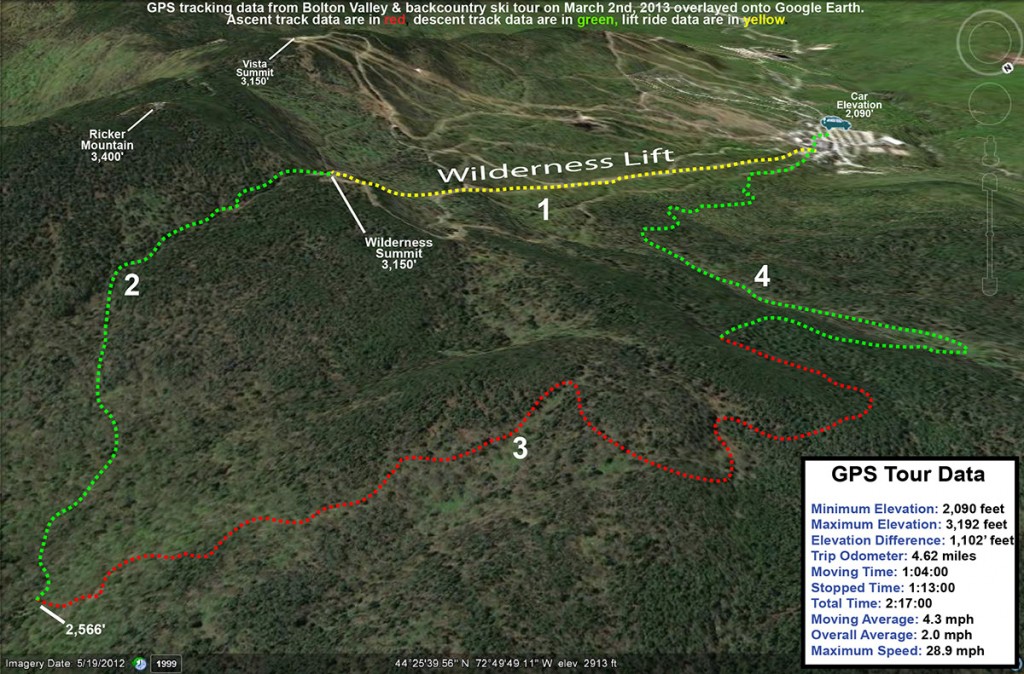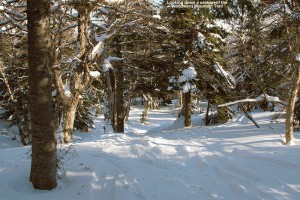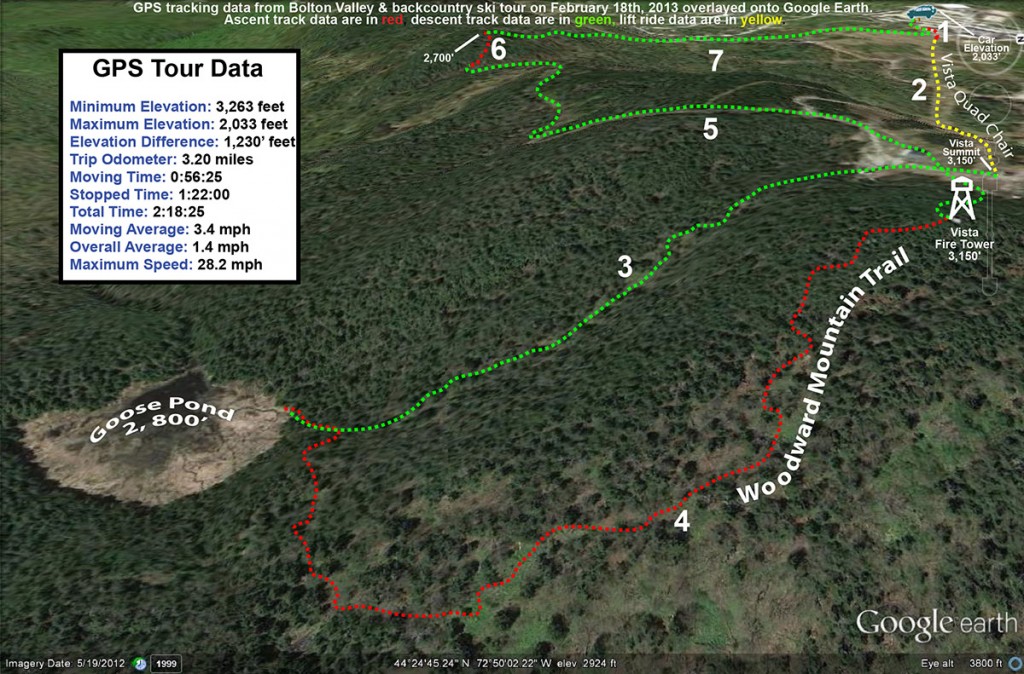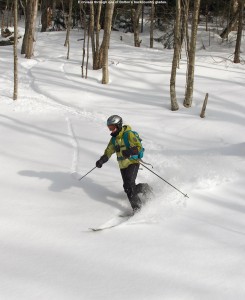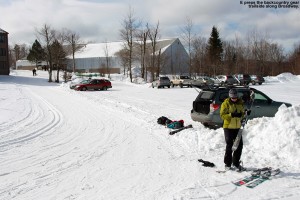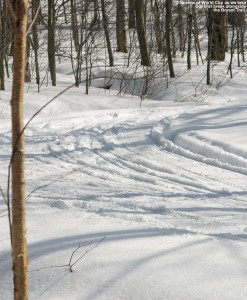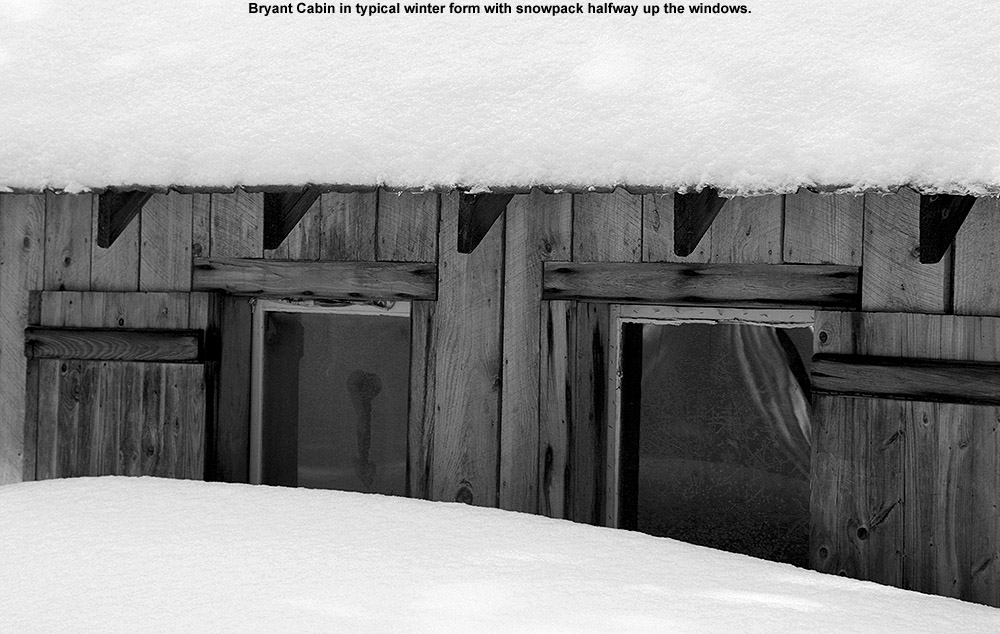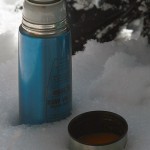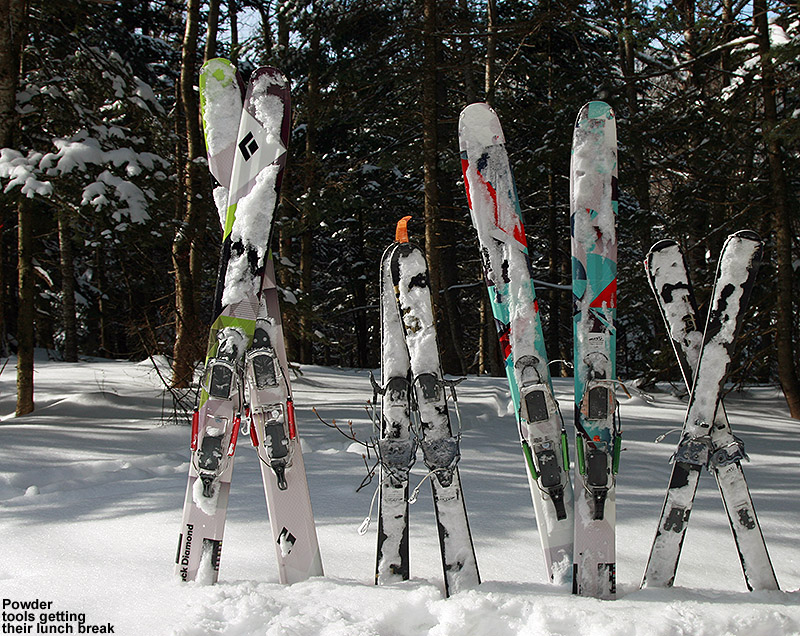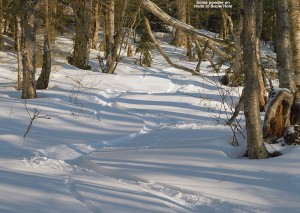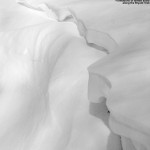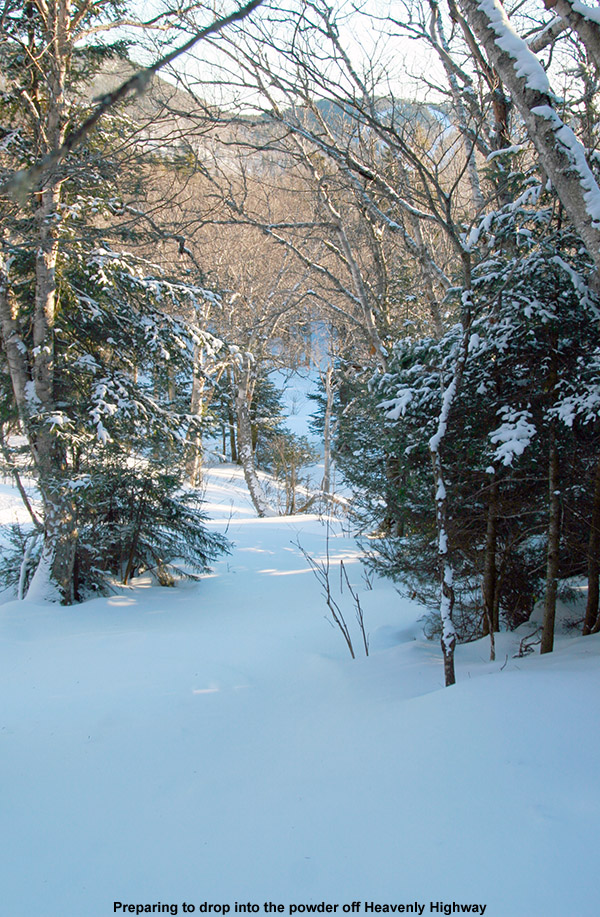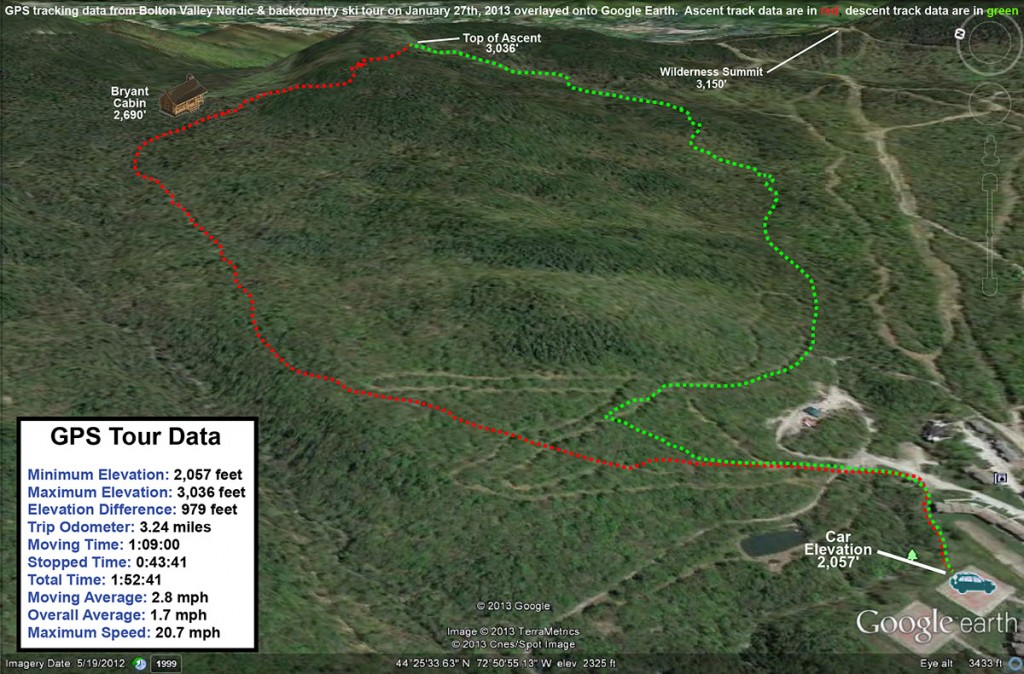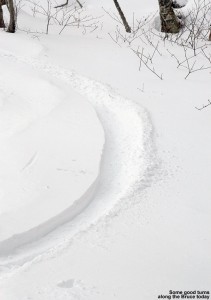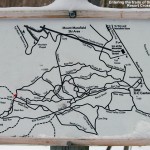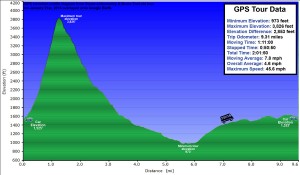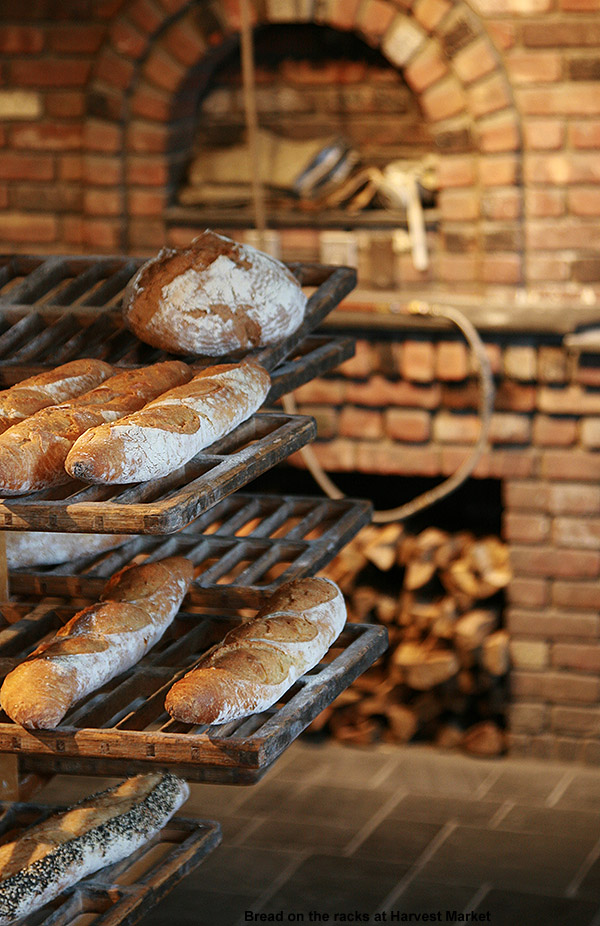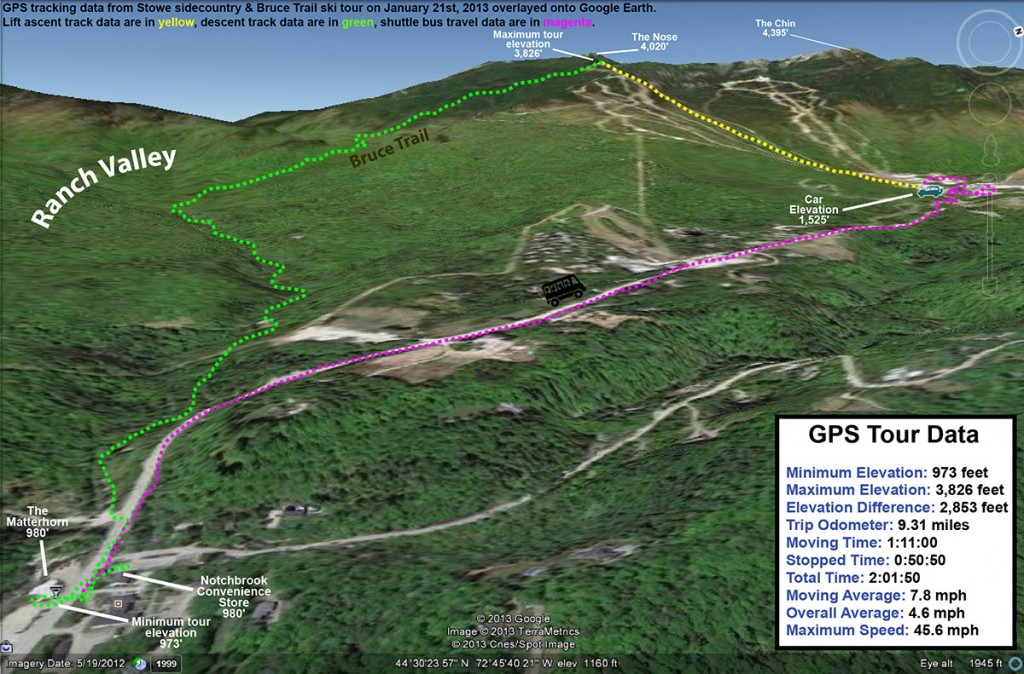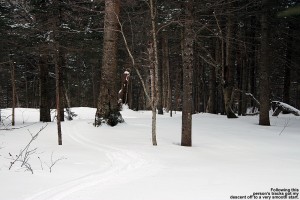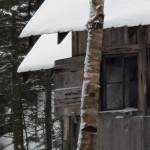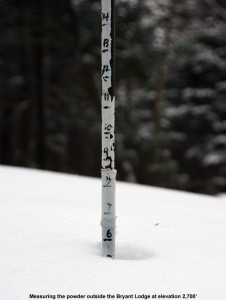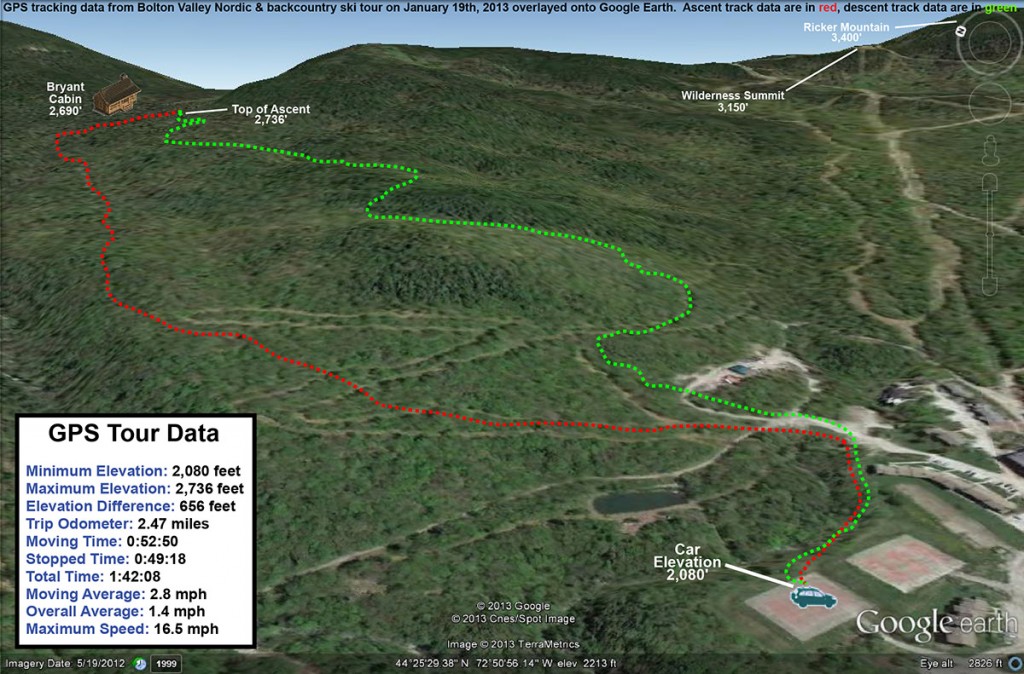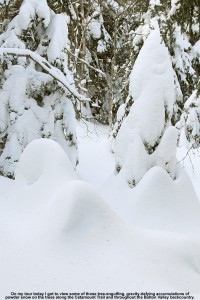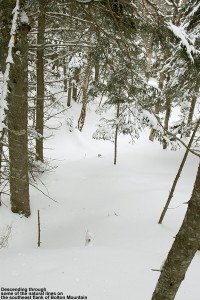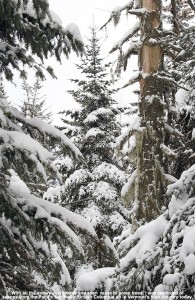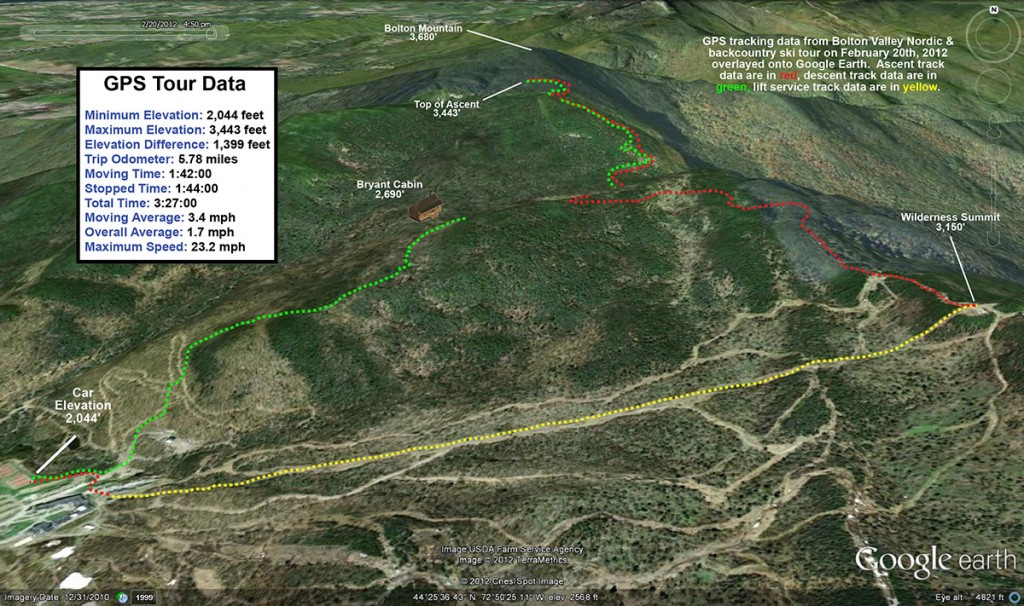
I didn’t have high hopes for the overall ski conditions today after what I experienced during yesterday’s outing at Stowe. Snow surfaces in the lower elevations had warmed earlier in the week, followed by plenty of cold nights, and the temperatures yesterday just weren’t warm enough to get the snow to soften. Gondolier was quite firm yesterday afternoon when I made my final descent to the base, with generally frozen granular and a bit of loose granular. Fortunately there was some refuge up in the alpine elevations above ~3,800’ where the snow was still wintry, but it would take some sun and/or warmth to get the lower elevations in shape today, and sun didn’t appear to be in the forecast. Whatever the case, we’d be able to head back up into the alpine to get to the good snow if necessary; today was our final BJAMS ski day of the season, and if the right group of willing students came together, my plan was to make use of the reconnaissance I’d done yesterday and get them up for some fun turns in the area of The Chin.
“…he dropped in with
gusto and led into a
huge sweeping turn…”
Throughout the morning today, E was getting various calls and text messages from folks letting her know that they weren’t going to be making it to ski program. Those students in the BJAMS theatre program have been putting in many long days of preparation over the past 10 weeks, and this weekend was the culmination of those efforts with shows on Friday and Saturday. Most of those students were so sapped of energy from long days and very late nights, that skiing just wasn’t in the cards. Luke was one of those students, but fortunately Claire had made it out for the day. After combining the usual number of absences for various reasons with the ugly-looking weather forecast and the many students resting up from the play, the end result was eventually just a handful of students and adults meeting at the base of Spruce Peak today. When the dust and reorganization had settled, it turned out that both E and Claire were free to go with our group, and the only kids that we’d have would be Ty, Dylan, and Jack.
Ty and Dylan were raring to go for some hiking and turns in the alpine, and it turned out that Jack was more than ready as well. Somehow, a little bird had told him that I’d been out on the mountain yesterday doing some reconnaissance in the alpine near The Chin… and that I just might be planning to take the ski group up there today. He came ready with his backpack holding a couple bottles of water, and an attitude that said “Let’s get up there!” Ty, Dylan, and I grabbed our ski packs, E and Claire joined us, and we headed up the Gondola for a visit to the wilds of The Chin. Everyone in the group had been up on The Chin and other alpine areas of Mt. Mansfield extensively for hiking in the warmer months, but for everyone but me, this was going to be their first experience up there with winter snowpack and skis. We hoped that Mother Nature was going to make the experience a good one.
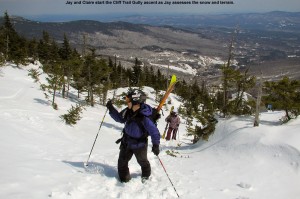
Indeed the weather was ultimately on our side today, and skies that might have been cloudy became blue and almost cloudless as we set off on our midday adventures. Claire was unsure of how long she wanted to hike and ski, but when I told her we’d be starting off with and ascent and some turns in the Cliff Trail Gully, which was a fairly quick ascent to the ridgeline, she was game. While I was finishing with the other boy’s packs, Dylan led the charge upward, and blazed the ascent using a combination of the boot pack I’d used yesterday and some variations of his own. It was immediately obvious that we were going to be dealing with a different kind of snow today. The snow that had been firm with a bit of wind or sun crust yesterday was now softening in the sun. The ascent was absolutely delightful; there were occasional bouts of gusty winds, but for the most part the temperature was perfect, the snow supportive, and the boy’s attitudes positive. Although notably slower than my solo pace yesterday, we probably gained the ridge at around 4,100’ in roughly 30 minutes.
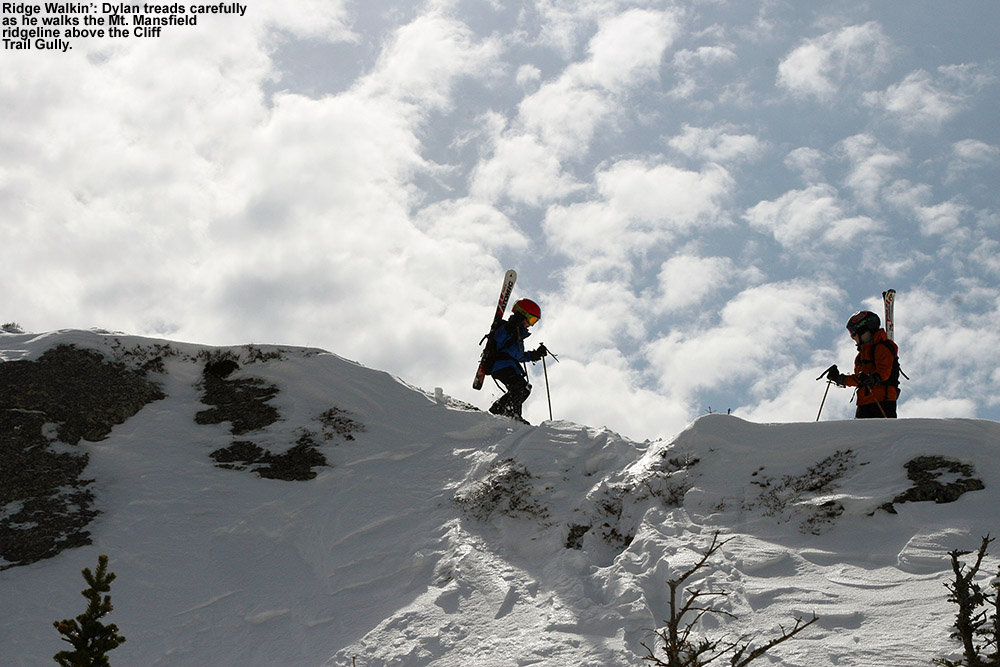
The views from the ridgeline were tremendous, and Claire was absolutely loving her decision to join us for the full ascent. The boys were already feeling in their element, as we watched them traverse higher on the craggy rocks farther south along the ridgeline. We hung out for about 20 minutes for drink and snacks, where we conversed about the season’s skiing, and just generally enjoyed the scenery and weather. We could have just as easily been up there in gray and cloudy conditions, but apparently the sun wanted to make its presence know.
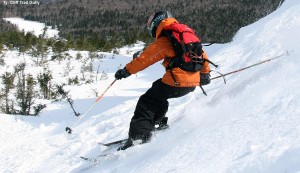
To begin the descent, the boys headed over to the lip of the gully so that they could drop in on the steep terrain. The snow that was protected against the ridgeline was somewhere between spring and winter, but generally dry and edgeable; it was going to support some nice turns. Dylan was chomping at the bit to drop in, and after heading to the highest part of the lip, he dropped in with gusto and led into a huge sweeping turn that send him flying right down the gully into the terrain below. Ty and Jack followed suit, and within moments the boys were whooping and hollering about how great the turns were as they made their way down the upper sections of the gully. Indeed once I dropped in myself I found the snow to be well worthy of their praise. One could stick next to the protection of the rocky wall of the ridge for the driest snow, or head left out into more sunshine for more spring-like surfaces. We mixed it up with turns in various part of the gully until we’d dropped a couple hundred vertical feet, right to the spot where I’d descended yesterday that at that time marked the transition to lower-quality snow. That wasn’t the case today thanks to the assistance of the sun, but as we stood atop one of the overlooks and Jack saw the Cliff House below, he lamented the fact that we’d already descended so far and would soon be back to the bottom of the gully. I told him not to worry – we didn’t have to descend if we just wanted to keep touring.

Instead of descending the rest of the gully, I led the group on a traverse across to the next gully southward (see stage 4 in the detailed Google Earth GPS map from yesterday’s outing), and we were able to follow the same track that I’d used yesterday. I told the group that one option was to make another ascent here and ski this gully from the top of they wanted. The boys weren’t all that enthusiastic about another ascent, so after a few moments of discussion, we decided to descend the new gully and see how it went. We saw some great terrain below us, but I warned them that I hadn’t scouted the bottom of this gully yesterday. I told them that we could end up having to hike back out and descend via the Cliff Trail Gully if the trees got too tight or we got ran into cliffs. The acknowledged my advice, and then it was time to drop in. The descent of the second gully started with some nice steep terrain among sparse, buried evergreens. There were really a lot of fun terrain options such as rollovers and small ledges in there that will lend themselves to a lot of future exploration. As we continued downward, the trees began to get tight, and Dylan seemed to be having quite a time blazing a trail through the evergreens using a combination of his own ideas and the tracks of a previous skier that had passed through the area. With all the experience they continue to build, it really is inspiring to watch how confidently the boys navigate their way through challenging terrain like a maze of subalpine evergreens. They were inspecting options and helping each other out all while they were well ahead of the adults. Eventually my spider sense told me that that we needed to break right toward the Cliff Trail Gully, and after some tight squeezes through a few spots, we found ourselves in a pleasant spot atop a rock outcropping among the sea of evergreens. About 100-200 feet below we could see the Gondola summit area, and it felt as if we were on a balcony overlooking a show of skiers and boarders starting their way down the slopes. We spent another few minutes there on the knoll while everyone gathered back together via their own routes through the evergreens, and then we cut right about a dozen yards to get back to the Cliff Trail Gully. We finished our descent to the Cliff House there, and that bottom section of the gully served up some nice turns. It was ski pole-style high fives all around for the folks that had just completed their first descent from the alpine areas of Mt. Mansfield. I didn’t track our outing today by GPS, but for visual details, refer to stages 3 through 5 shown on the detailed Google Earth/GPS map from yesterday – today though, instead of ascending the gully shown in stage 5, we descended it.
“Indeed the weather
was ultimately on
our side today…”
It was around 3:00 P.M as we began the next phase of our descent through the resort. We took Perry Merrill, and didn’t see another soul on the entire descent. The late season date, the fact that it was Sunday afternoon, and the ominous forecast had really cleared out the mountain. With the terrain entirely to ourselves, I led the boys in some huge GS-style turns that took up the whole width of the trail, and they had a lot of fun with that. Ty said that he had used up all his patience for going slow during the hiking portion of the day, so with that in mind it was a great time to let him really open it up. The snow was in fact fantastic, not too firm, not too sticky; it was just what you’d want in corn snow to sink in those edges and let the skis ride. Whatever the sun had not been able to do yesterday in terms of softening up the snow surfaces, it had done it in spades today. We had time to squeeze in one more run of Gondolier before calling it a day and heading back to Spruce Camp. Today is the end of the season for the Gondola and for Spruce Peak, and it ultimately turned out to be a great one. The weather was extremely changeable though – once we were back at Spruce Camp, gray clouds had come in and sleet began to fall.
We finished off the day with a visit to Frida’s for dinner, since we hadn’t been there at all this season. The guacamole was excellent as usual, with a real good dose of lemon today. Despite the fairly spring-like atmosphere out there, the boys both went for hot chocolate, which Frida’s does Mexican-style with some interesting extra flavor. It looks like this week is going to have more precipitation coming in, although not necessarily a lot of snow. It doesn’t look especially warm though, so it looks like it could be OK for snow preservation. It’s great to be going into the month with such a strong snowpack, because it looks like there a lot more great skiing to come.

